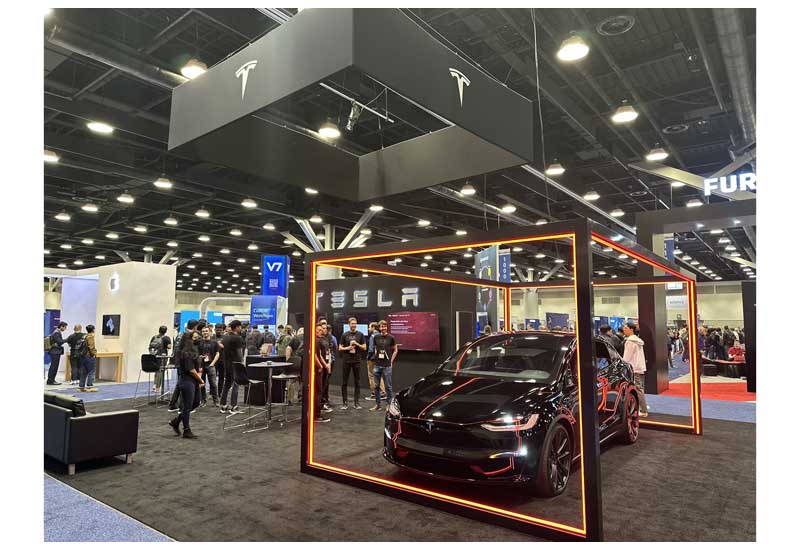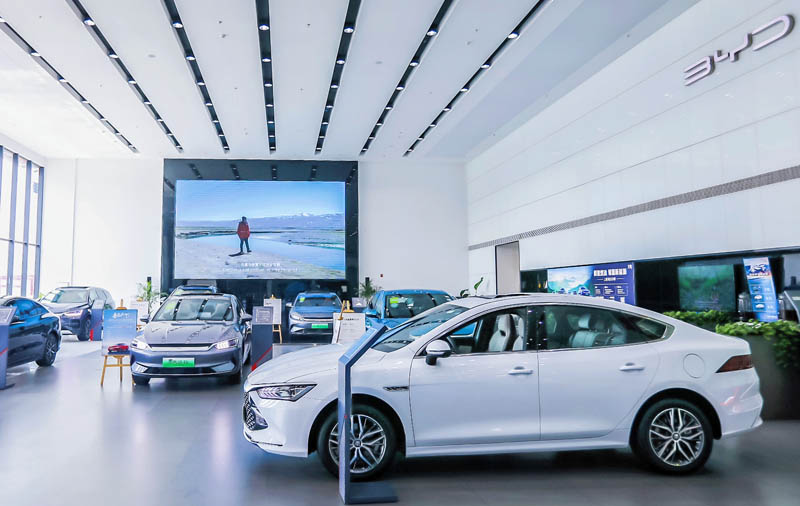Chinese auto giant BYD enjoyed a banner year in 2023, selling an impressive 3,024,000 vehicles to become the world’s top EV maker. This 62% year-over-year surge let BYD surpass its target of 3 million electric vehicle deliveries. But how does BYD’s success stack up against trailblazer Tesla?
BYD’s rapid growth in its home market of China enabled it to dethrone Tesla as the global EV leader in 2023. However, a deeper analysis shows key differences between the two companies’ models and trajectories.
BYD Focused on Affordable EVs…For Now
A major factor in BYD’s sales explosion is its lineup of relatively affordable electric sedans and SUVs tailored for Chinese consumers. Models like the Qin Plus and Song Plus make up the bulk of sales.
In contrast, Tesla targets higher price points currently unattainable for BYD. Model 3 starts around $46,000 in the US, far above BYD’s cheapest EVs. Tesla also leads in Europe where BYD lacks offerings, Tesla dominates key European Norway, Denmark, and Sweden EV markets in 2023.
However, BYD plans to enter Europe and America eventually. Whether its budget-friendly China lineup succeeds overseas remains unproven. Cost sensitivities in those markets differ.
Tesla Leads in Tech and Future Revenue Streams
While behind in unit sales today, Tesla holds big leads in key technologies, especially autonomy. Its neural network-powered autonomous driving capability has no equal at BYD.
Once scaled up, Tesla’s robotaxi ambitions could completely reshape its financial profile, FSD Beta V12.1 Review – A “Game Changer” for Self-Driving?. BYD lacks this kind of disruptive revenue stream on the horizon.

Tesla also pioneered OTA software updates that continuously improve vehicles. And Tesla Energy leads in grid storage. BYD cannot yet match this ecosystem.
Essentially, Tesla operates as a cutting-edge AI and robotics entity that happens to currently generate most revenue from EVs. Its tech focus leads in margins and multiple future profit drivers.
Tesla’s Cost Advantages Are Formidable
Even on vehicle manufacturing where BYD is focused, Tesla holds significant cost advantages. BYD will struggle to match Tesla’s margins and sales at equivalent prices once Cybertruck, Robotaxi, and the $25,000 model arrive.
Tesla’s scale, vertical integration, and manufacturing innovations enable an estimated $16,000+ advantage per car over traditional automakers. BYD must catch up to Tesla’s expertise honed over nearly two decades.
Different Models, But Healthy Competition Overall
BYD expanding EV adoption ultimately aligns with Tesla’s mission, though the two diverge in strategies. Tesla obsesses over technology and autonomy, while BYD emphasizes affordability and rapid scaling.
For now, BYD is delivering what Chinese consumers need – cheap EVs. It lacks Tesla’s numerous future spin-off businesses. But as Elon Musk stated, competition is welcome if it catalyzes sustainable transport.
BYD’s rise pressured Tesla and others to further accelerate EV progress. As both companies evolve, BYD may move upmarket while Tesla adds lower-cost options. More choice benefits consumers as EVs become mainstream.
In a promising sign, BYD even supplies LFP battery cells to Tesla. The symbiotic ties highlight the EV market’s potential for coexistence and mutual benefit. Tesla’s ambitious technology roadmap keeps it a cut above the competition as the auto industry shifts gears.
Related Post: Tesla Delivers Over 1.8 Million Vehicles in 2023, Tops 5 Million Total
